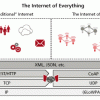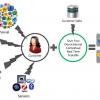Strategic advice to leverage new technologies
Technology is at the heart of nearly every enterprise, enabling new business models and strategies, and serving as the catalyst to industry convergence. Leveraging the right technology can improve business outcomes, providing intelligence and insights that help you make more informed and accurate decisions. From finding patterns in data through data science, to curating relevant insights with data analytics, to the predictive abilities and innumerable applications of AI, to solving challenging business problems with ML, NLP, and knowledge graphs, technology has brought decision-making to a more intelligent level. Keep pace with the technology trends, opportunities, applications, and real-world use cases that will move your organization closer to its transformation and business goals.
Recently Published
Building Privacy Controls into Software, Part III
Part II of this Executive Update series completed an overview and critique, begun in Part I, of the results of a Cutter survey on developing privacy-sensitive software.
Partitioning in EA
Partitioning is a key technique in enterprise architecture (EA). Architects can use partitioning to make it easier to manage development, evolution, and governance of architectures and to simplify the overall architecture landscape. In a recent Executive Update (see "Best Practices in Partitioning Enterprise Architectures"), we take a close look at today's best practices in partitioning enterprise architectures.
Mobility ranks high on the list of must-have technologies organizations are seeking to implement in the coming year. A recent Cutter Consortium survey (conducted in July–October 2014) that asked 49 organizations about their mobile technology practices and adoption plans helps shine some light on corporate mobility spending trends for 2015.
It’s that time of the year again —the annual Cutter Predicts … series. See what Cutter Fellows and Senior Consultants envision for 2015 (and in some cases, beyond) as business technology continues to morph.
The IoT should not be viewed as only a technological opportunity. It has the potential to transform how people and business interact in significant ways. Therefore, people must be placed at the center of the IoT conversation.
The Industrial Internet matters. It changes software, it changes systems, it changes the way the world is wired, it changes business models, and it changes the workforce. And one day soon, it will save lives.
The new wave of connectivity and digitization brought by the IoT will be different. As established assumptions break down in the face of increased connectivity, smart start-ups and wily challengers will have an open field to reimagine entire industries.
This article provides an overview of the complexity and various architecture components that go into making the IoT platform.












